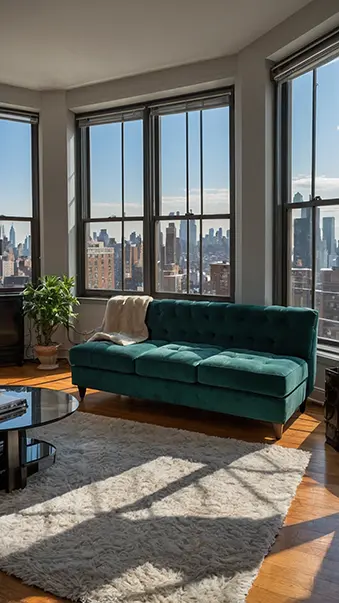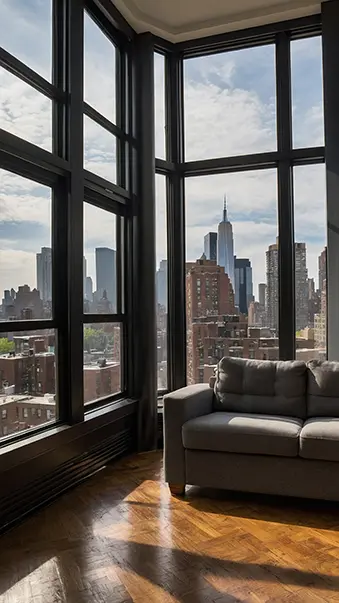Queens Rental Trends:
Top Neighborhoods and Where Demand Is Growing
Queens Rental Trends:
Top Neighborhoods and Where Demand Is Growing
Top Neighborhoods and Where Demand Is Growing

This article examines rental market trends in Queens, analyzing changing median rents, emerging popular micro-neighborhoods, and the factors driving this growth. With a focus on infrastructure improvements and new short-term rental regulations, we explore how these dynamics are reshaping demand and what this means for renters and investors alike.
Overview of the Queens Rental Market
The Queens rental market has undergone significant changes in recent years. As the borough has become increasingly attractive to young professionals, families and investors alike, rental trends have shifted dramatically. Data from recent market analyses indicate a steady increase in average rental prices, though not uniformly across all neighborhoods.
While some areas continue to experience rapid increases in rental rates, others remain relatively affordable and offer a wide range of options for potential renters. This article explores the various factors contributing to these changes, examines the growth of certain micro-neighborhoods, and discusses how improvements in local infrastructure and new rental regulations are influencing demand.
Rising Average Rents and Price Disparities
Recent statistics show that the average rent in Queens has been gradually increasing, reflecting a combination of rising demand and limited supply in certain sectors. Historically, Queens has been known for its affordability compared to Manhattan and Brooklyn, but as the area’s amenities and connectivity improve, rental prices have begun to follow an upward trend. Landlords in neighborhoods like Long Island City and Astoria are capitalizing on the high demand by adjusting rental rates, while still offering competitive options compared to the skyrocketing prices in Manhattan.
Despite these increases, areas like Jamaica and some parts of Flushing continue to offer more budget-friendly options. The disparity in rental price trends across Queens is not only a result of location desirability, but also tied to the changing demographics of renters, from students and young professionals to established families seeking better living conditions outside of the city’s most congested areas.

Emerging Micro Neighborhoods in Queens
One of the most noticeable trends in Queens is the emergence and growing popularity of several micro-neighborhoods. In recent years, areas such as Ridgewood, Woodside, and parts of Long Island City have garnered significant attention from both renters and investors. Ridgewood, for example, has experienced a surge in demand, with rental inquiries up over 10% year-over-year. Its mix of affordable housing options and revitalized urban environment make it particularly attractive.
Similarly, Woodside, known for its strong community feel and proximity to Manhattan via well-connected transit routes, has seen a steady increase in rental demand. These emerging hotspots are attracting a diverse population that values not only cost-effectiveness, but also the unique cultural and community attributes inherent in each neighborhood. This localized popularity is often supported by word-of-mouth and targeted community improvements, further enhancing their appeal in the rental market.
Impact of Infrastructure Improvements and Regulatory Changes
Infrastructure improvements and regulatory changes are among the key drivers behind the changing dynamics of the Queens rental market. Queens has benefited tremendously from improved public transportation networks, including expansions and upgrades to subway lines and bus routes that have increased connectivity to Manhattan and other boroughs. These improvements not only reduce commute times, but also improve the overall quality of life, making previously overlooked areas more desirable to renters. In addition, the implementation of new short-term rental regulations has had a notable impact.
Stricter regulations on platforms such as Airbnb have reduced the number of properties used exclusively for short-term rentals. As a result, many property owners are converting these units back to long-term rentals, increasing the available inventory for residents. This regulatory shift has helped stabilize rental prices in some neighborhoods by ensuring a more predictable supply of long-term rentals, although in high-demand areas, prices continue to rise as competition for quality units intensifies.
Conclusion
In summary, the evolving rental market in Queens reflects a complex interplay of economic, demographic and regulatory factors. As average rents rise in key areas and micro-neighborhoods such as Ridgewood and Woodside gain traction, the region is solidifying its reputation as a desirable destination for both renters and investors. Improvements in public infrastructure and a recalibration of short-term rental policies have furthered this trend, contributing to a more vibrant and dynamic rental landscape. While these changes present opportunities, they also require careful market analysis and adaptation strategies from both landlords and tenants. Ultimately, understanding these trends is critical to making informed decisions in a market that continues to evolve rapidly.
